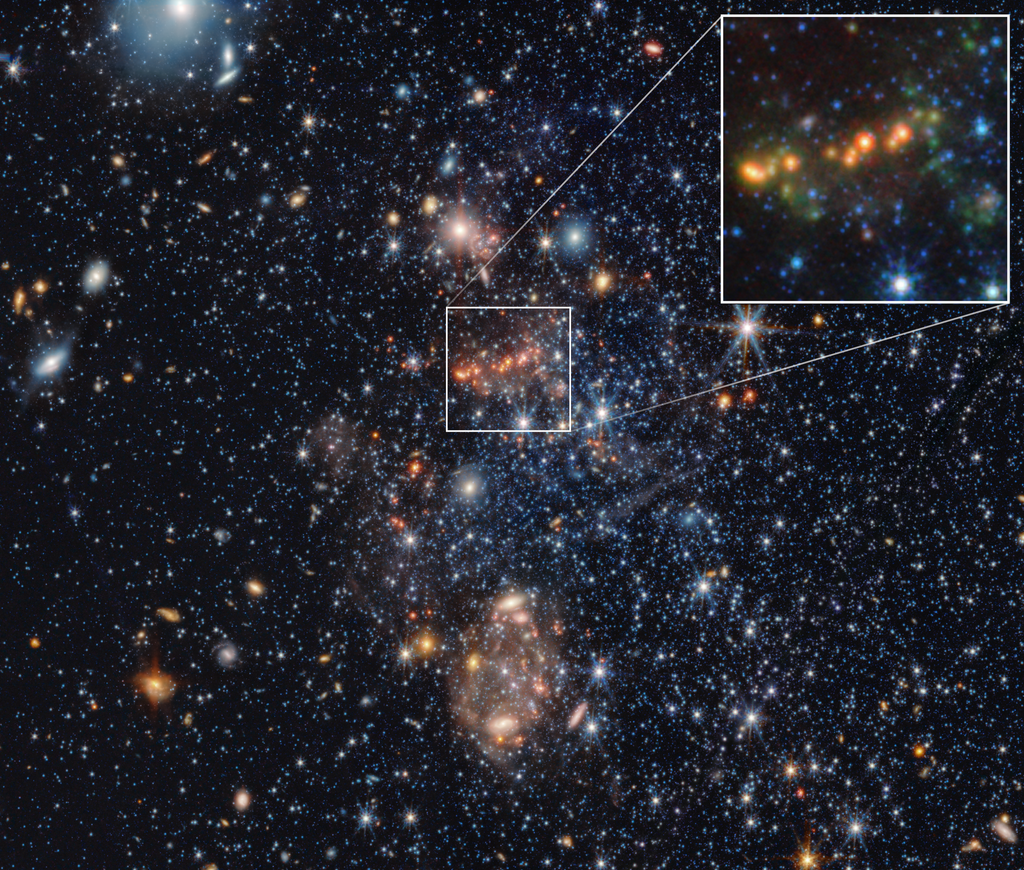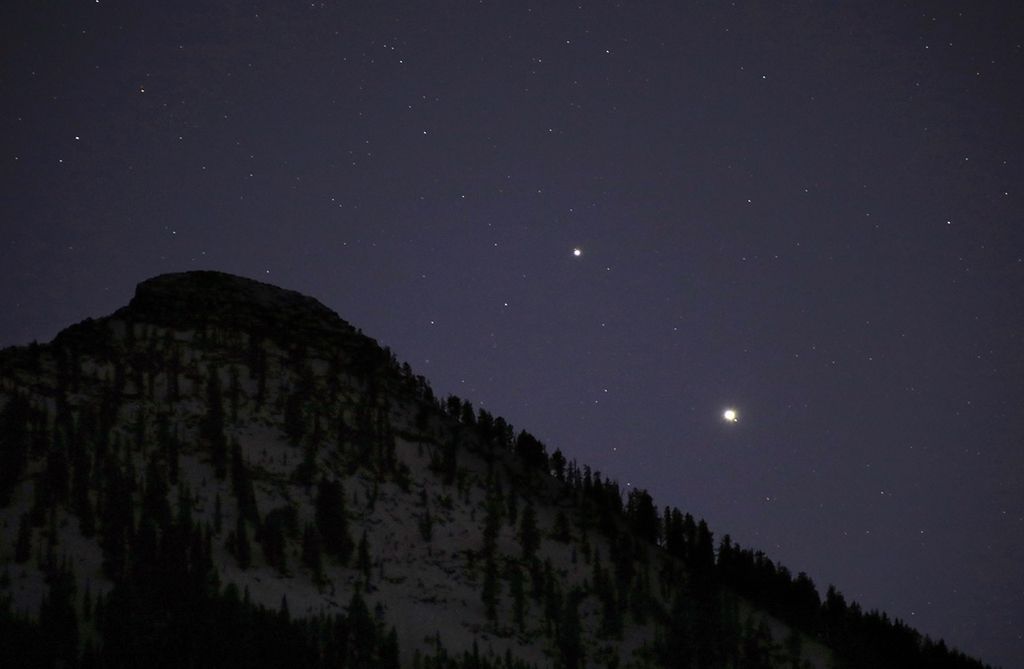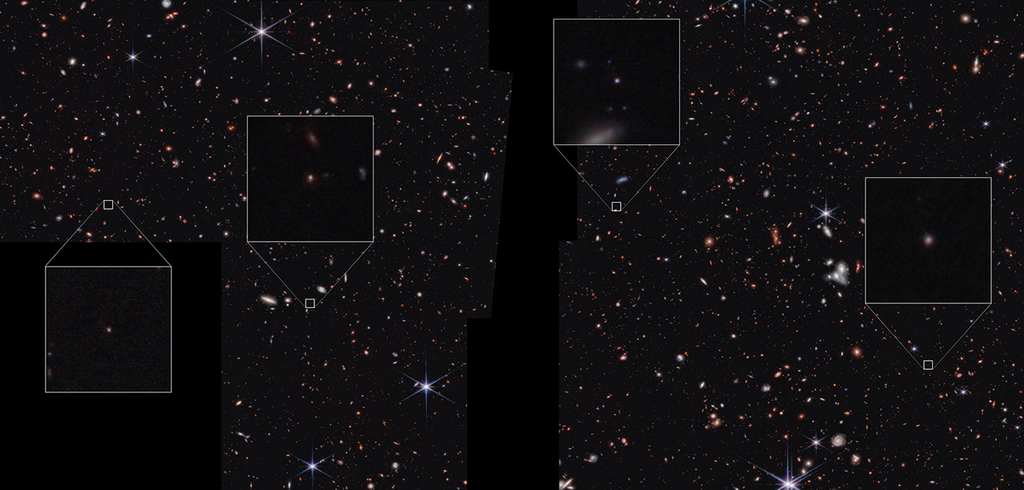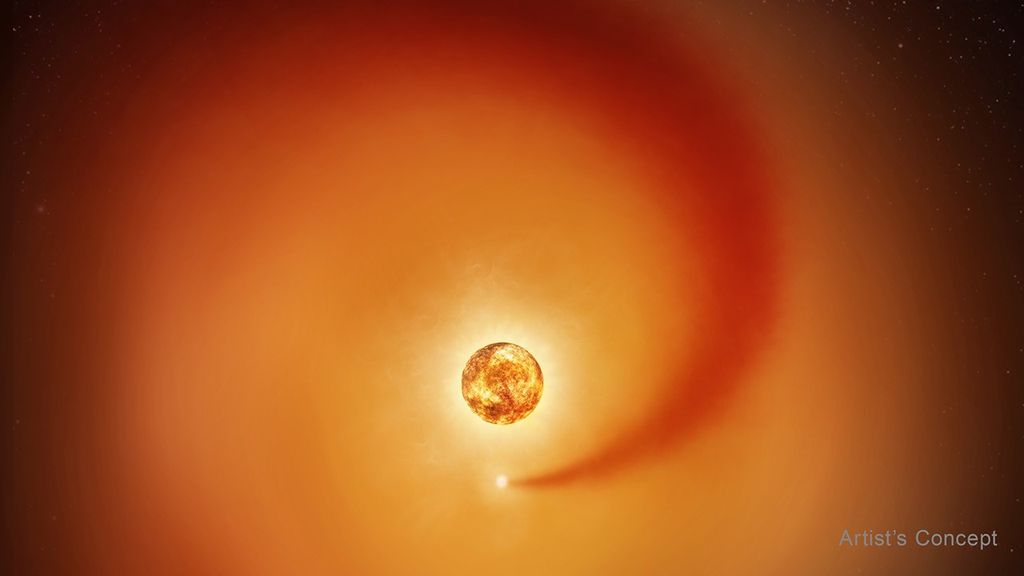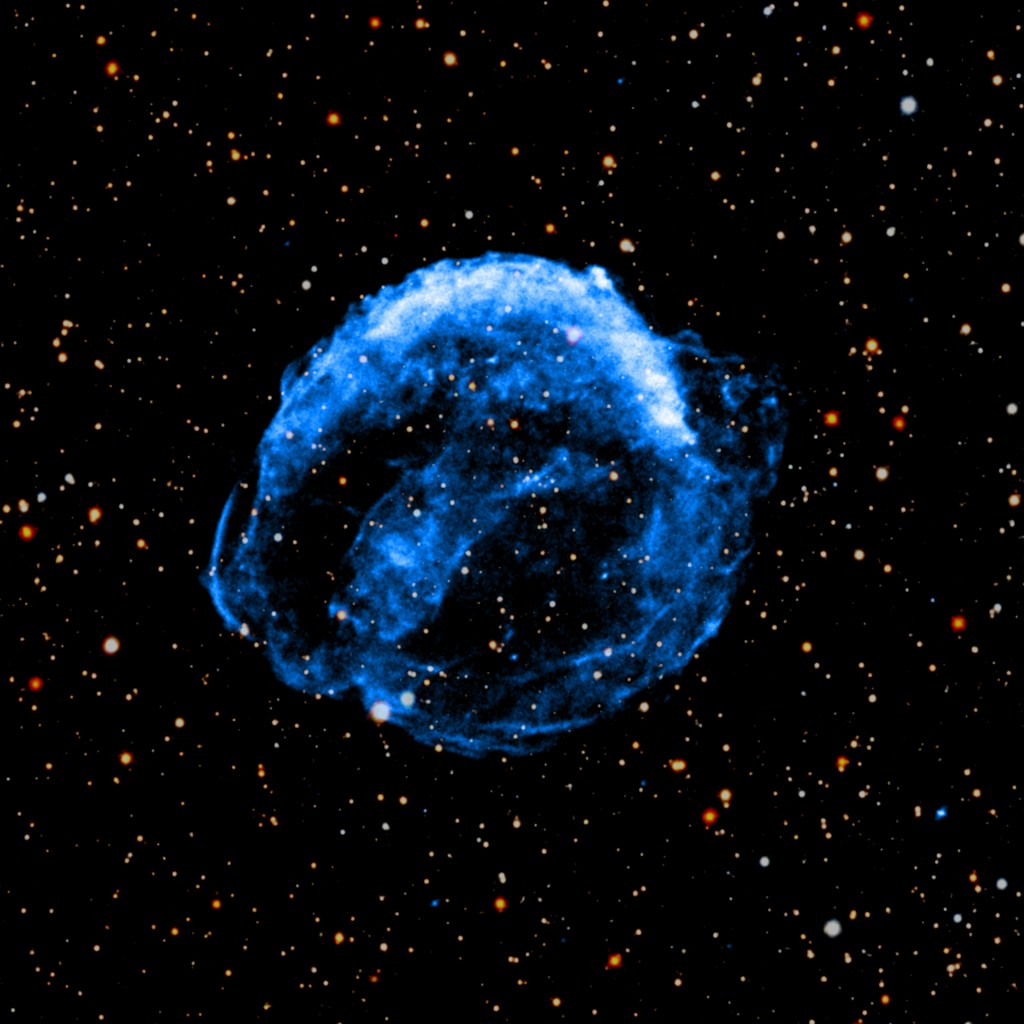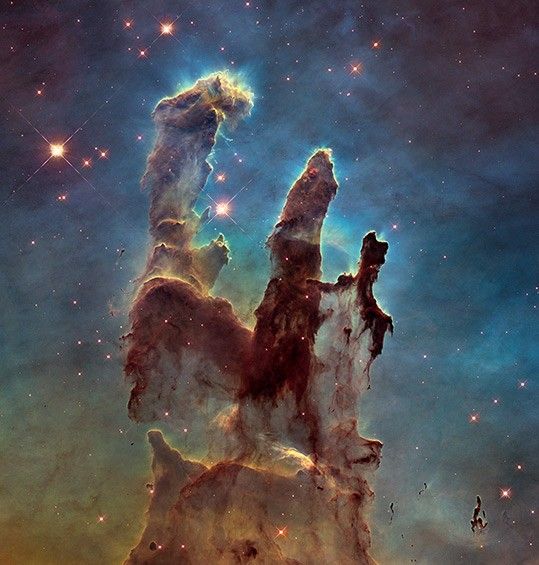1 min read
Compass and Scale Image for Comet ISON
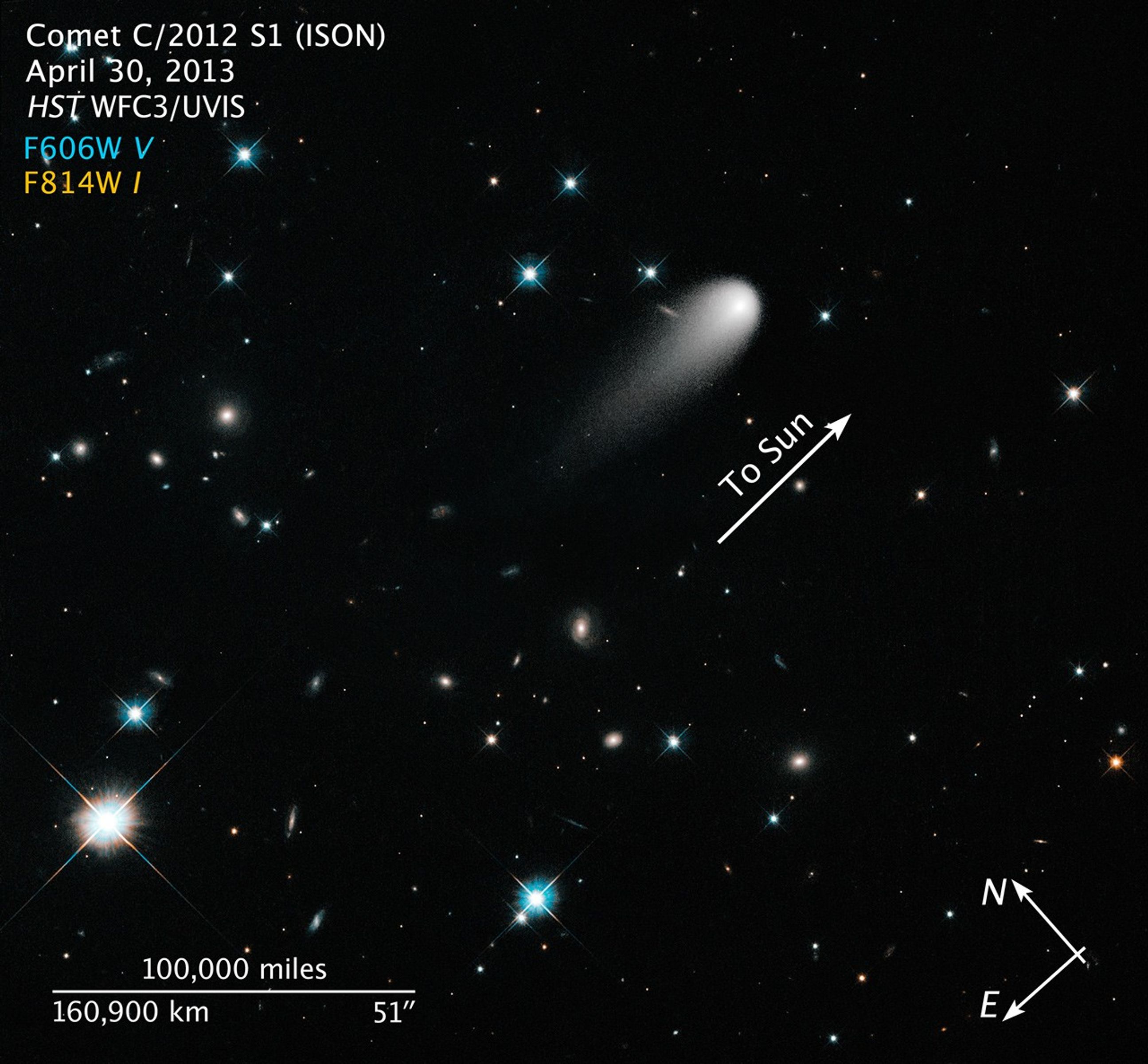
About the Object
- DistanceDistanceThe physical distance from Earth to the astronomical object. Distances within our solar system are usually measured in Astronomical Units (AU). Distances between stars are usually measured in light-years. Interstellar distances can also be measured in parsecs.At the time of the Hubble observations on April 30, 2013, the comet was 3.9 astronomical units (363 million miles) from the Sun. The comet was 4.32 astronomical units (402 million miles) from Earth.
About the Data
- Data DescriptionData DescriptionProposal: A description of the observations, their scientific justification, and the links to the data available in the science archive.
Science Team: The astronomers who planned the observations and analyzed the data. "PI" refers to the Principal Investigator.The image was created from Hubble data from proposal 13229 by the Hubble Heritage Team, PI: Z. Levay, M. Mutchler, C. Christian, L. Frattare, W. Januszewski, M. Livio, J. Mack, and J. Sokol (STScI/AURA), and K. Noll (NASA/GSFC). High-level science products for these data are available from the MAST archive. - InstrumentInstrumentThe science instrument used to produce the data.HST>WFC3/UVIS
- Exposure DatesExposure DatesThe date(s) that the telescope made its observations and the total exposure time.April 30, 2013
- FiltersFiltersThe camera filters that were used in the science observations.F606W (V) and F814W (I)
- Object NameObject NameA name or catalog number that astronomers use to identify an astronomical object.Comet ISON
- Object DescriptionObject DescriptionThe type of astronomical object.Comet
- Release DateJuly 25, 2013
- Science ReleaseGalaxies, Comets, and Stars! Oh My!
- CreditNASA, ESA, Hubble Heritage Project

Color Info
Color InfoA brief description of the methods used to convert telescope data into the color image being presented.
This image is a composite of separate exposures acquired by the WFC3/UVIS instrument. Several filters were used to sample various wavelengths. The color results from assigning different hues (colors) to each monochromatic (grayscale) image associated with an individual filter. In this case, the assigned colors are: Grayscale: F606W (V) (of comet) Cyan/blue: F606W (V) Red/orange: F814W (I)

Compass and Scale
Compass and ScaleAn astronomical image with a scale that shows how large an object is on the sky, a compass that shows how the object is oriented on the sky, and the filters with which the image was made.
Related Images & Videos
Share
Details
Last Updated
Aug 17, 2025
Contact
Media
Claire Andreoli
NASA’s Goddard Space Flight Center
Greenbelt, Maryland
claire.andreoli@nasa.gov

